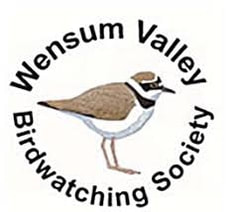|
Speakers: Rick and Elis Simpson Reporter: Cath Robinson 48% of known wader populations are in decline 30% of all wader species are extinct, endangered or threatened. Waderquest is a charity established by Rick and Elis Simpson which has two main aims: to raise awareness of waders and the threats that they face internationally, and to raise funds to support wader conservation initiatives worldwide, especially those involving locally led community projects. It all started with the Spoon-billed Sandpiper. While researching the background of this bird before trying to see it, Rick and Elis became aware of the real danger of extinction facing it and indeed many other waders. They decided they needed to do something to help and to raise money to support conservation efforts.
They embarked on a self-funded year-long world-wide trip to see as many wader species as they could, including rare and endangered waders, and established the charity for sponsorship monies. They started their trip driving from Northampton across to Titchwell expecting to see Lapwings as their first wader en route but were shocked that they saw none on that journey. This reinforced their motivation to DO something. Pak Thale in Thailand is a well-known wintering site for the Spoon-billed Sandpiper and for thousands of other very similar looking waders (bar the bill)! It must have been quite a challenge to pick out the Holy Grail but they did. Rick then described some of the highlights of the rest of their trip: In the United Arab Emirates, they went to see the White-tailed Lapwing. Scanning the desert, he saw a couple of yellow sticks and then another pair of yellow sticks. And then he twigged that the lapwing had such perfect camouflage that the bright yellow legs were the only sign they were there! And then he turned around and saw a Sociable Lapwing, another highly endangered species threatened by loss of its steppe habitat. They also found the Crab Plover, a smaller straight billed avocet-looking bird which is unusual for plovers in that it uses its bill to make a tunnel to lay a white egg (hidden in the hole) and the parents feed the young. These birds are at risk as the lagoon where they winter is at risk of being turned into a marina. On to the USA: the Long-billed Curlew in California (the female especially has a very very long bill) and then up to Washington State for a trio of coastal birds usually seen together: the Black Turnstone, the Surf Bird and the Rock Sandpiper. He described the torrential rain (NW coast states....) in which they just got glimpses of 2 of them but returning the next day after the rain had cleared, they spotted the Surf Bird in no time. So, the trio lived up to their reputation: if you see one, the others are close by. The guide there gave him a map for where to find the Mountain Plover in the Carrizo Plain near LA. This is a migratory bird passing through the desert, so Rick thought the map was a bit hopeful and not particularly helpful: a map of nothing with a blue biro cross marking the bird and some grey spots! But on the ground, he discovered the grey spots were tracks and on locating the blue biro cross he did indeed see the Mountain Plover. Next stop was New Zealand. We learnt that in NZ if you see a colour ringed Black Stilt then it is a genuine one and not a hybrid. Captive bred birds are ringed and those wild that are caught are DNA checked to see if they are hybrids and if not, then these are ringed. Bar-tailed Godwits in NZ are a subspecies known as Limosa lapponica baueri. In 2007 one satellite tagged bird called E7 flew non stop from NZ to the Yellow Sea, a distance of 10,000km. She then flew on to Alaska for the breeding season. In August she flew 8 days non-stop from Alaska to NZ setting a new known record of 11,700km. Rick then spoke about the vulnerability of waders on the East Asian-Australian Flyway. In South Korea the Saemangeum estuary was dammed in 2010 to create new land. In doing so it displaced 400,000 shorebirds who used it on their migration flyway. The Yellow Sea is similarly a vital stopping off place for migratory waders: this area has lost 60-70% of its intertidal zone in the last 30 years or so. He did report a couple of better news stories. In Australia, the Hooded Plover nests on lovely soft sandy beaches. A community programme encouraging people to give them space and not disturb them has led to an increase in breeding success from 5% to 50%. Similarly, the Piping Plover in the USA has benefited from a community programme over many years with a modest increase in breeding pairs. Waderquest supports both individual actions like these, supplying items such as notepads, banners, booklets; Headstart programmes eg. Black-tailed Godwit and Spoon-billed Sandpiper; research programmes with community involvement and a wide variety of appeals. These are all recorded on their website:www.waderquest.net which has extensive information about waders, conservation projects and news. Individuals can help by becoming a friend or purchasing something from their shop. 100% of donations go to the Grant Fund and the total amount that it has raised since its inception is >£35,000. Many thanks to Rick and Elis for sharing their story
0 Comments
Leave a Reply. |
Please feel free to read through our reports from our monthly indoor / online meetings. Archives
May 2024
Categories |

 RSS Feed
RSS Feed
